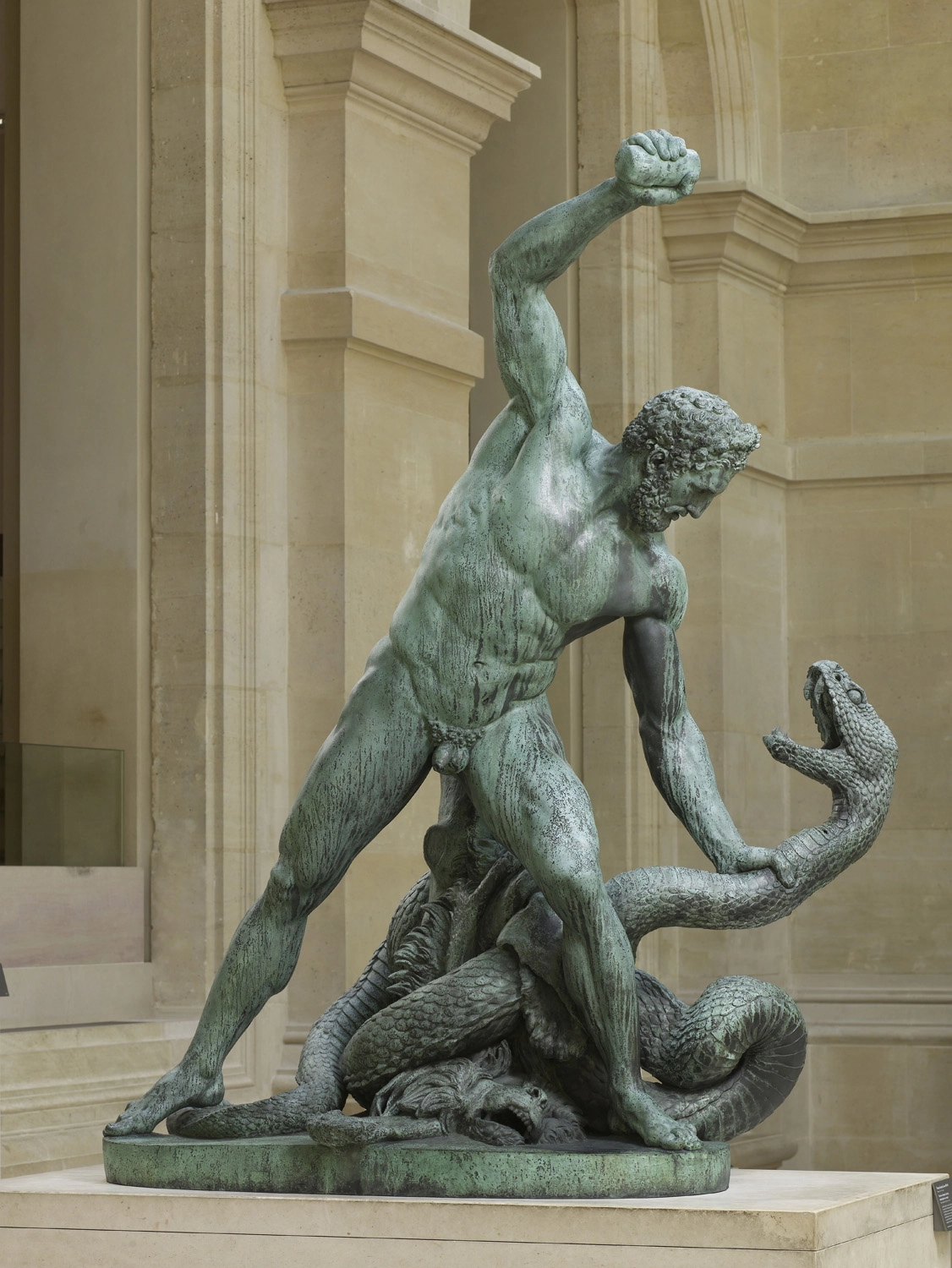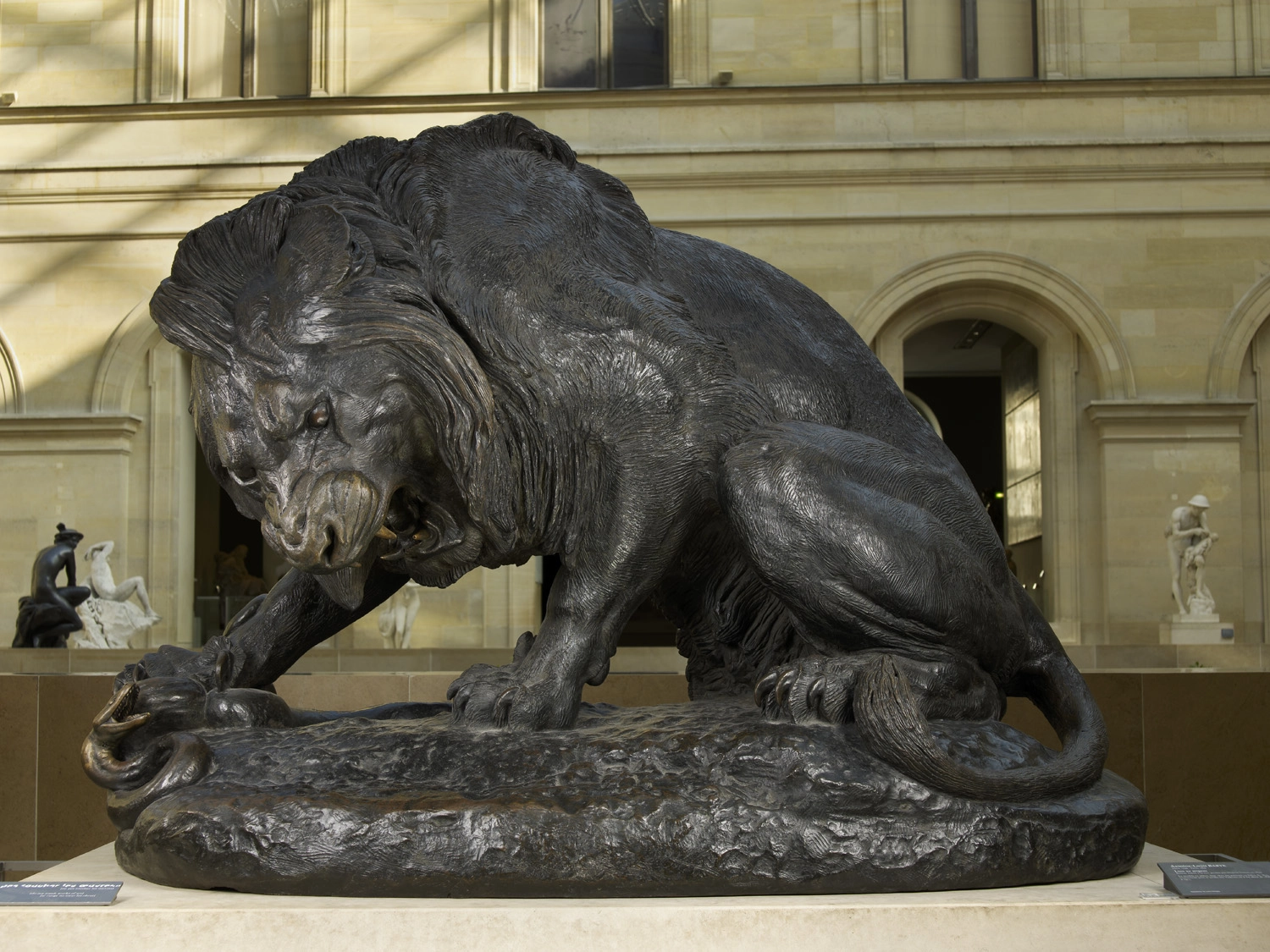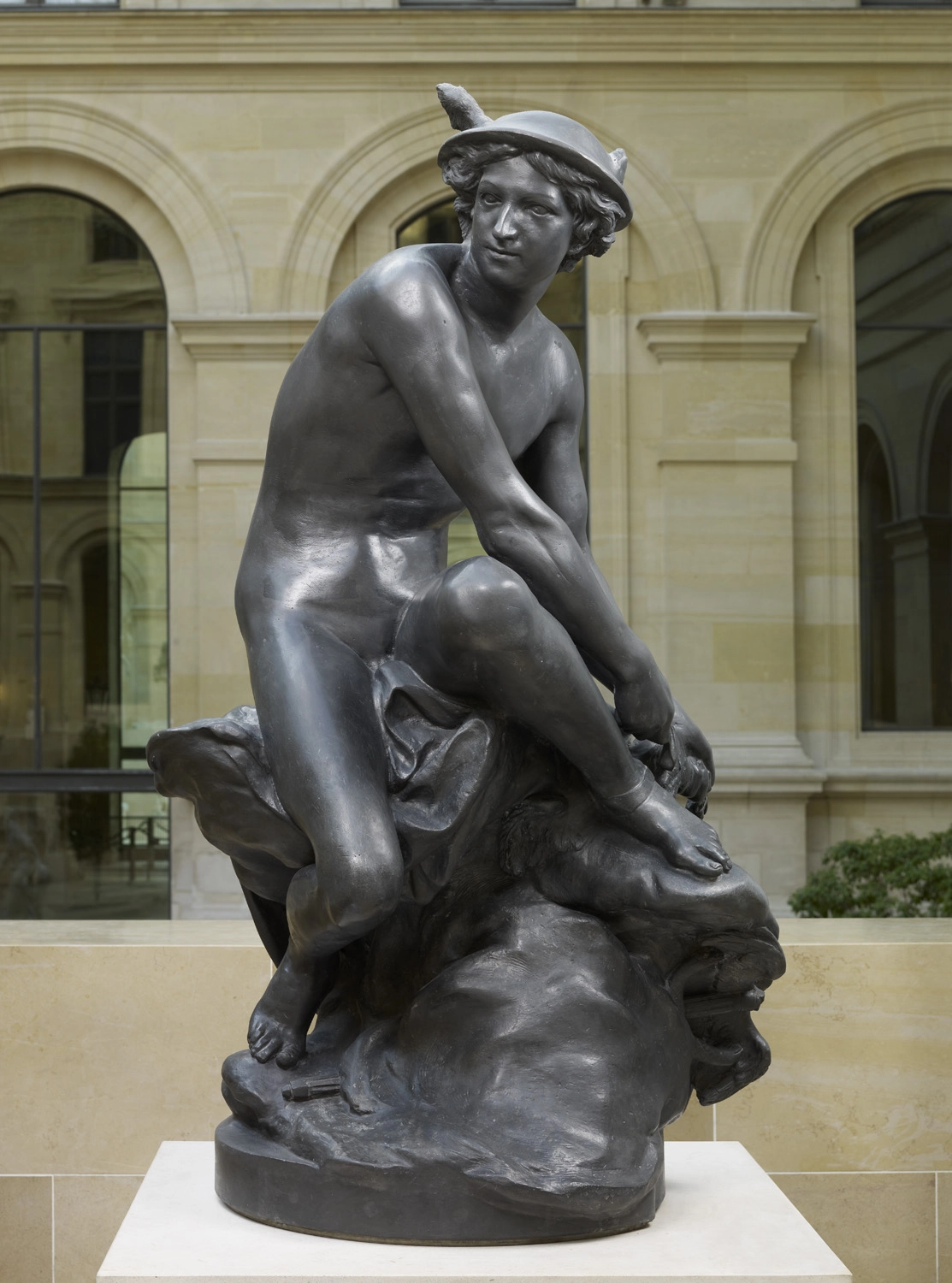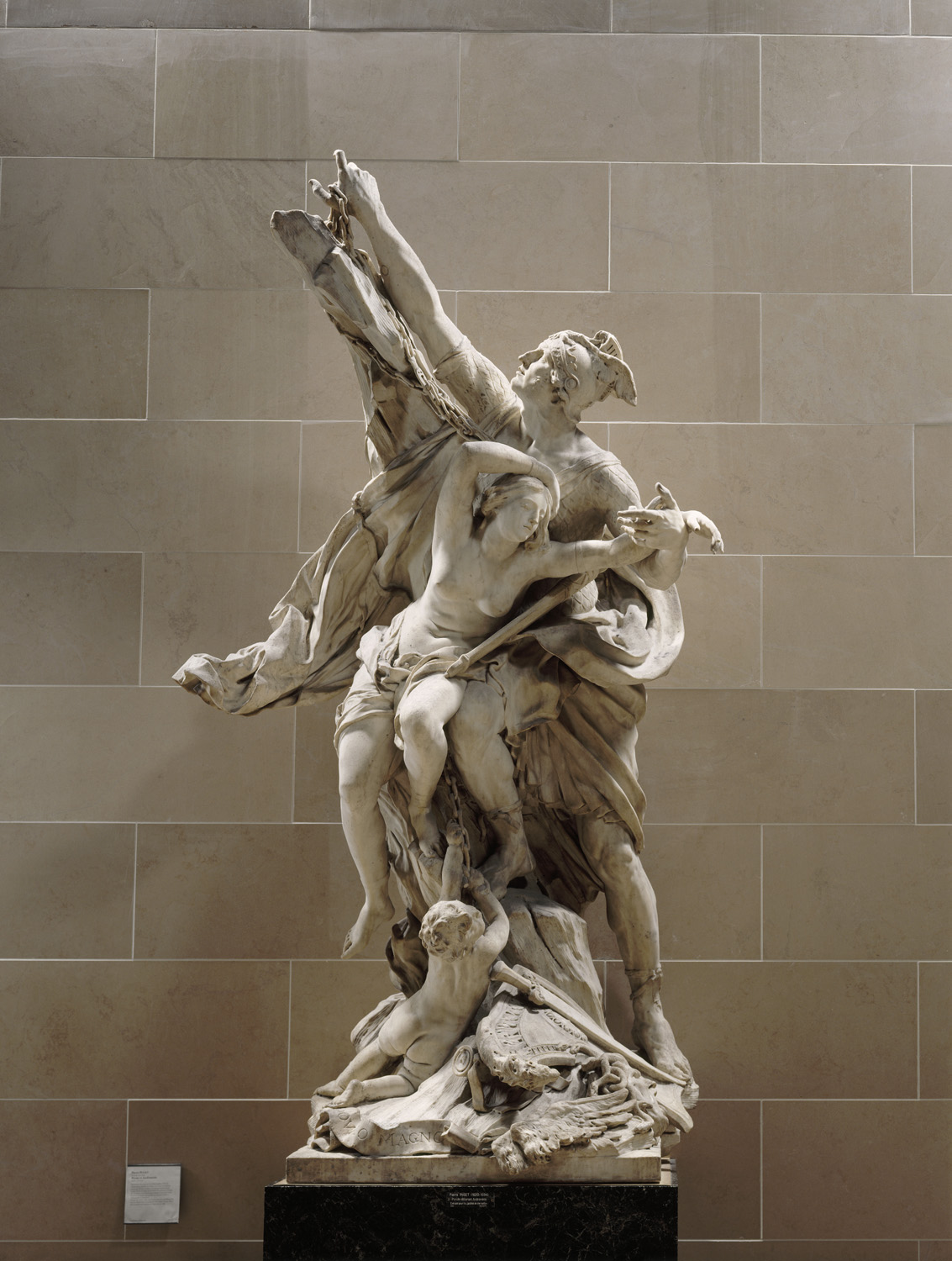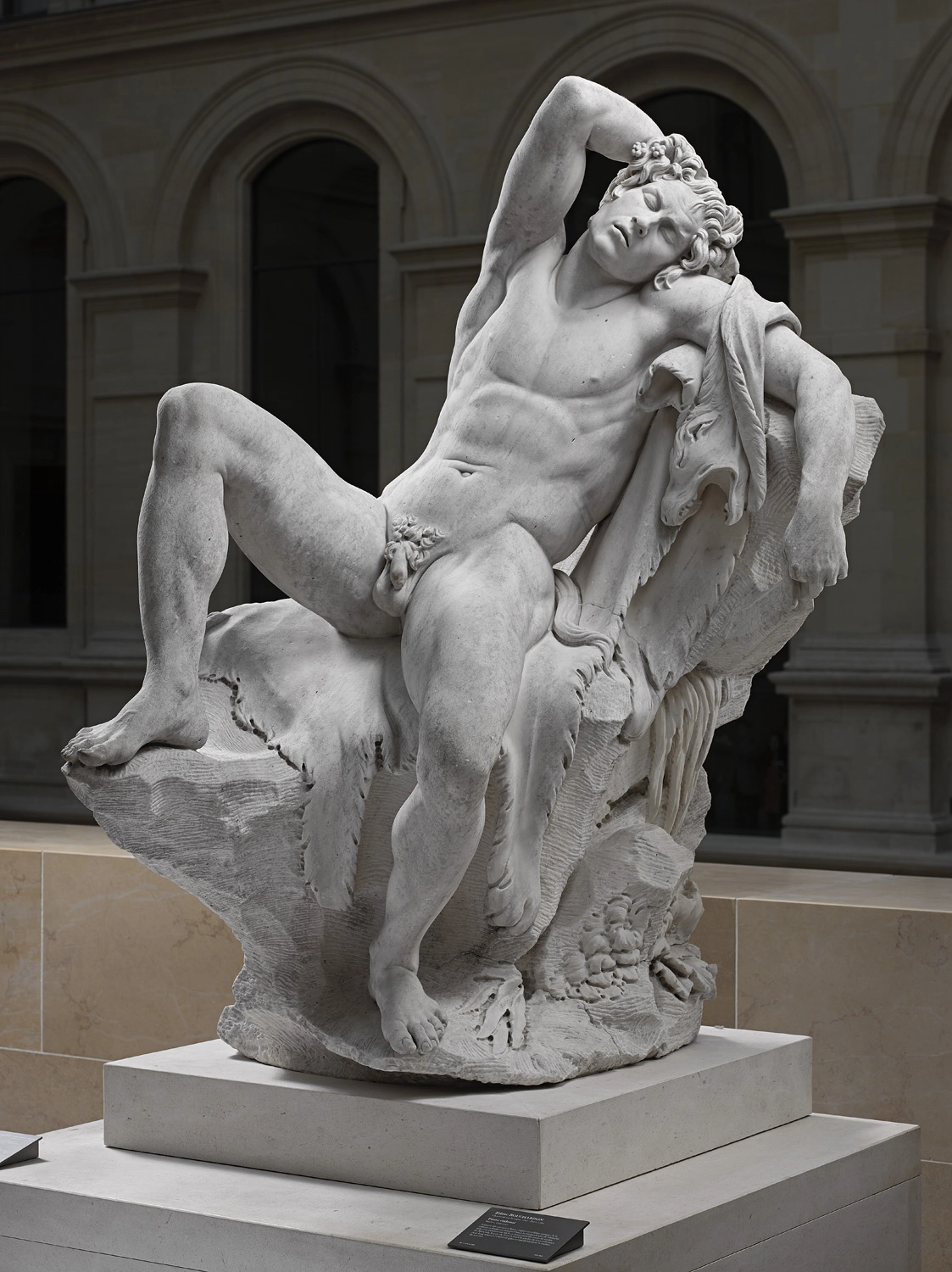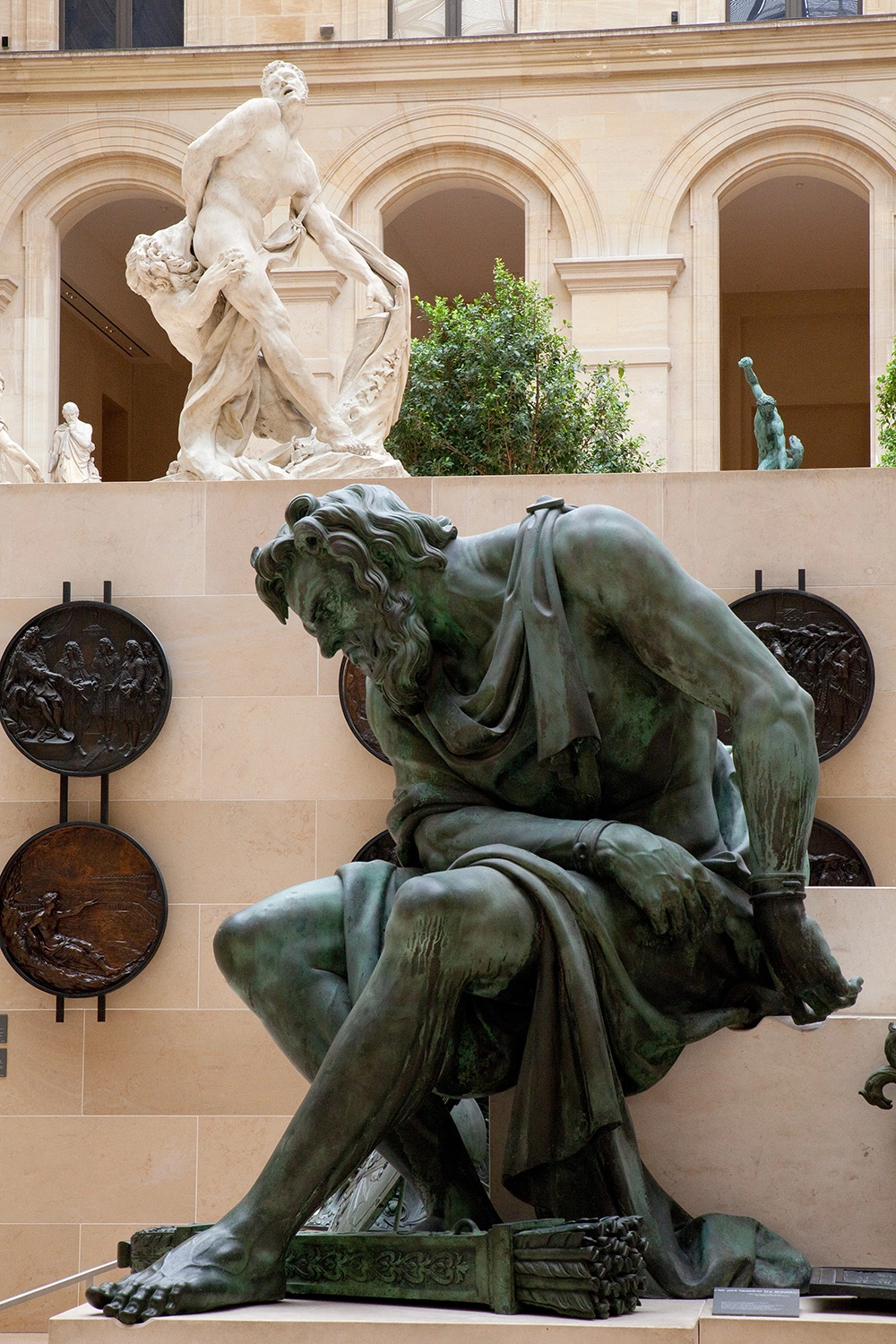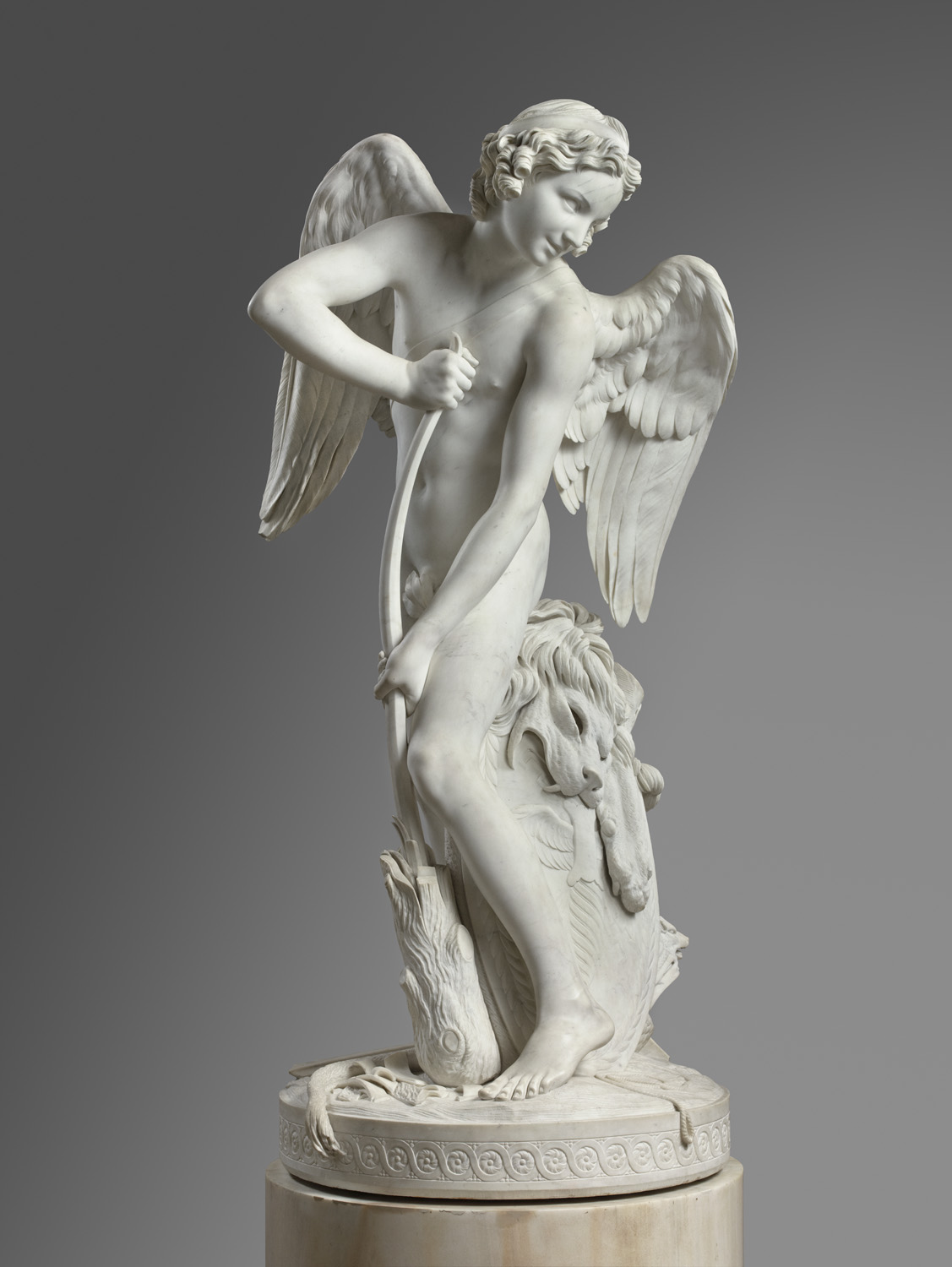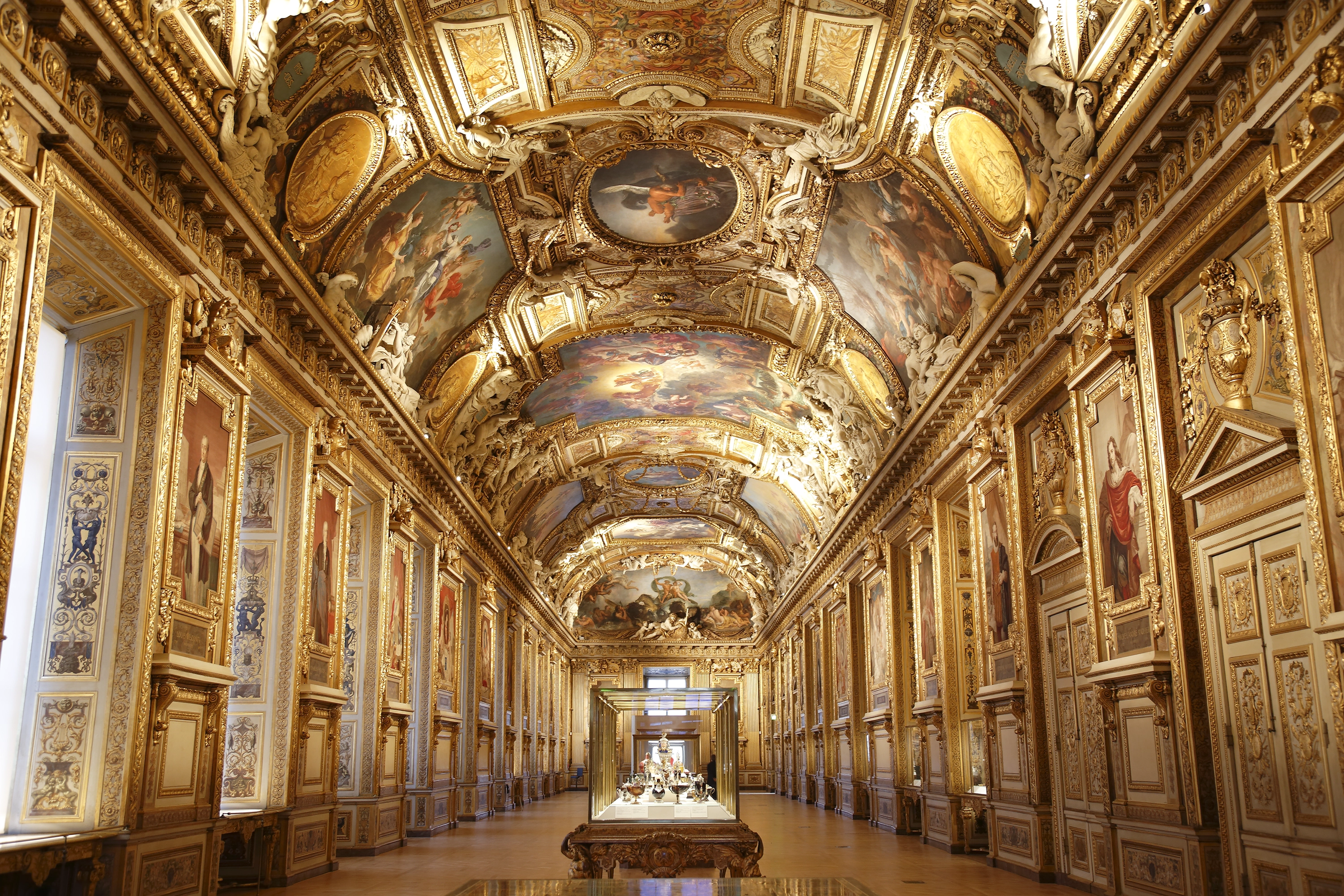Shining new light on sculpture Cour Puget and Cour Marly

Bathed in natural light streaming down from the glass ceilings, the masterpieces of French sculpture feel right at home in the Cour Marly and Cour Puget! Most of these statues were made for outdoor spaces, such as the gardens of the Château de Versailles or the Tuileries. What’s the best way to showcase works that were made for the outside – but suffer from exposure to the elements – inside? Here’s how.
From ministry to museum
The Richelieu wing (to the north, parallel with the Rue de Rivoli) is the most recent addition in the Louvre’s long history of construction. It was built under Napoleon III and housed the Ministry of Finance for more than a century, from 1871 to 1989. After the Ministry left for new headquarters in Bercy, in the east of Paris, the rooms were transformed into museum space and inaugurated in 1993.
When the architects I. M. Pei and Michel Macary began work to modernise the Musée du Louvre, the two courtyards were still open to the sky. They saw an ideal space to house sculptures that were made for gardens and public squares. A tiered layout allows works to be displayed on different levels and creates interesting vistas, while the glass ceilings ensure optimal lighting. A clever system of aluminium solar shading filters light and sound and regulates the temperature of the space.
The Cour Marly
King Louis XIV had a leisure residence at Marly, a few kilometres from Versailles, where the Court officially resided. That is where he liked to go with his privileged guests to escape court life for a few days.
The vast park at Marly, decorated with fountains and groves, was home to many graceful statues of divinities from ancient mythology, often linked to water such as the statuary groups representing French rivers, the decorative Cascade Rustique or ‘rustic waterfall’ and the carp pond.
The Château de Marly and its gardens are now gone, but some of its sculptures have survived. After adorning different public spaces in Paris, they are now at home under the shelter of the glass ceiling of the Cour Marly.
The most emblematic sculptures take place of pride at the height of the courtyard: the Marly Horses.
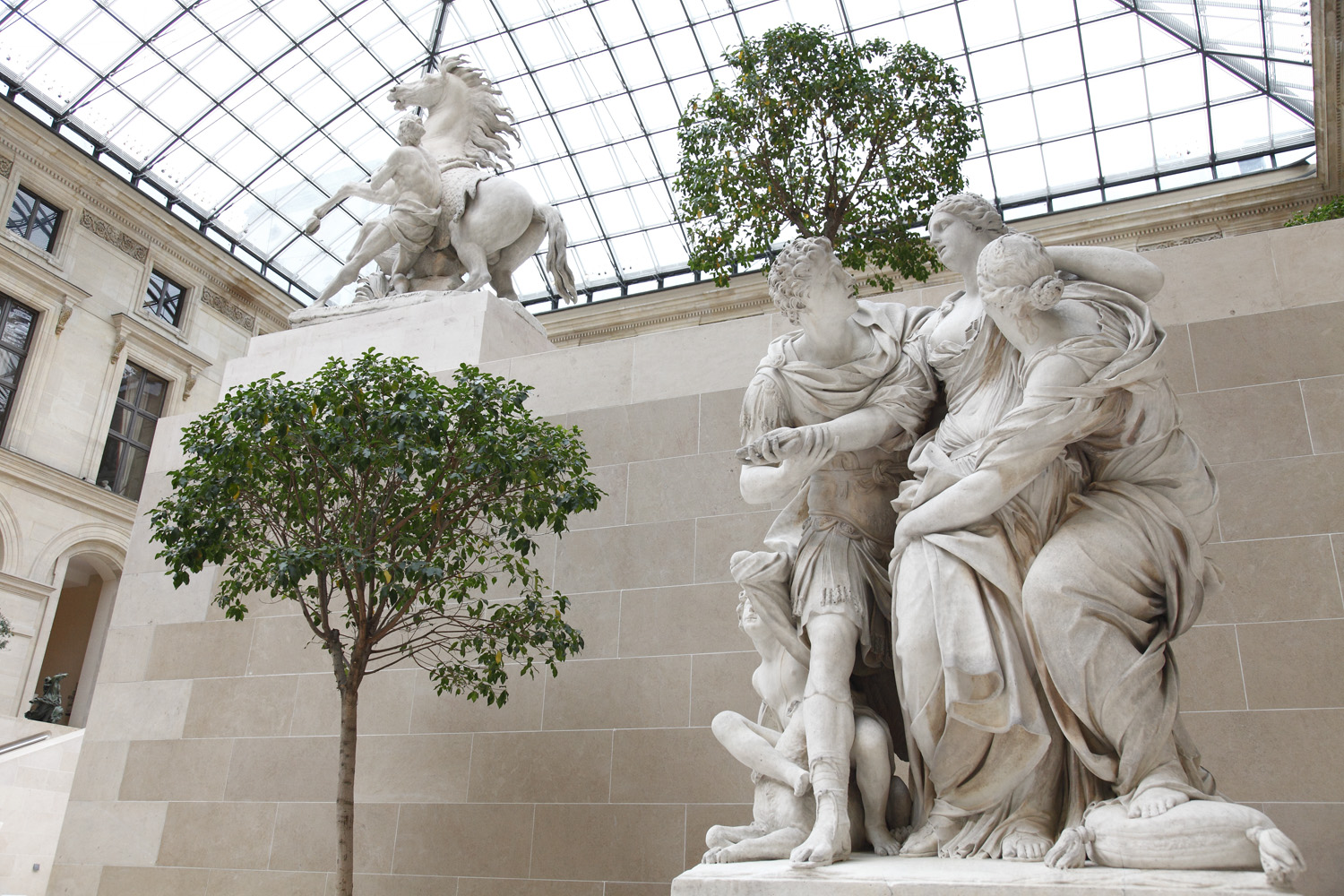
The Cour Puget
The Cour Puget is named after Pierre Puget, one of the most important sculptors under the reign of Louis XIV. The courtyard houses his masterpieces, Perseus and Andromeda and Milo of Croton, both made for the gardens of the Château de Versailles. These sculptures bear all the tell-tale signs of Baroque art: exagerated expressions, pent-up energy and intense drama. But they also have a moral to them: Milo, for example, symbolises the defeat of human pride. The former athlete, wanting to prove he was still strong, boasted he could split a tree trunk with his bare hands. But he just didn’t have it in him anymore, and his hand got stuck, leaving him at the mercy of a hungry lion. The legend actually says it was wolves who enjoyed Milo for lunch, but Puget preferred the more powerful image of the king of the jungle.

An overview of 17th- and 19th-century sculpture
The Cour Puget is a window onto hundreds of years of sculpture, showing how the art form changed from the 17th to the 19th century. The works from the 17th century come from royal monuments that were otherwise destroyed for the most part. They adorned large royal squares like Place Vendôme or Place des Victoires in Paris and proclaim the glory of the king.
The works from the 18th century come from gardens. At that time, light-hearted subjects in a delicate and elegant style were in vogue, like the Marquise de Pompadour, the favourite mistress of Louis XV, depicted as an allegory of Friendship.
Lastly, the Cour Puget offers a panorama of outdoor sculpture from the first half of the 19th century, from neo-classical works made under Napoleon I to Romantic statues like Duseigneur’s Orlando Furioso, in a lively, lyrical style.
The cour Marly
The Marly Horses
The Marly Horses – Take 1
Antoine Coysevox, one of Louis XIV’s favourite sculptors, made these two monumental works to glorify the Sun King. An allegory of Fame sits atop Pegasus, the winged horse from Greco-Roman mythology, proclaiming the military victories of the king. The other rider, Mercury, the Roman god of trade, personifies prosperity. With these two works, Louis XIV is celebrated in all aspects of his reign. This masterpiece was later moved to Paris to adorn the Tuileries Garden.
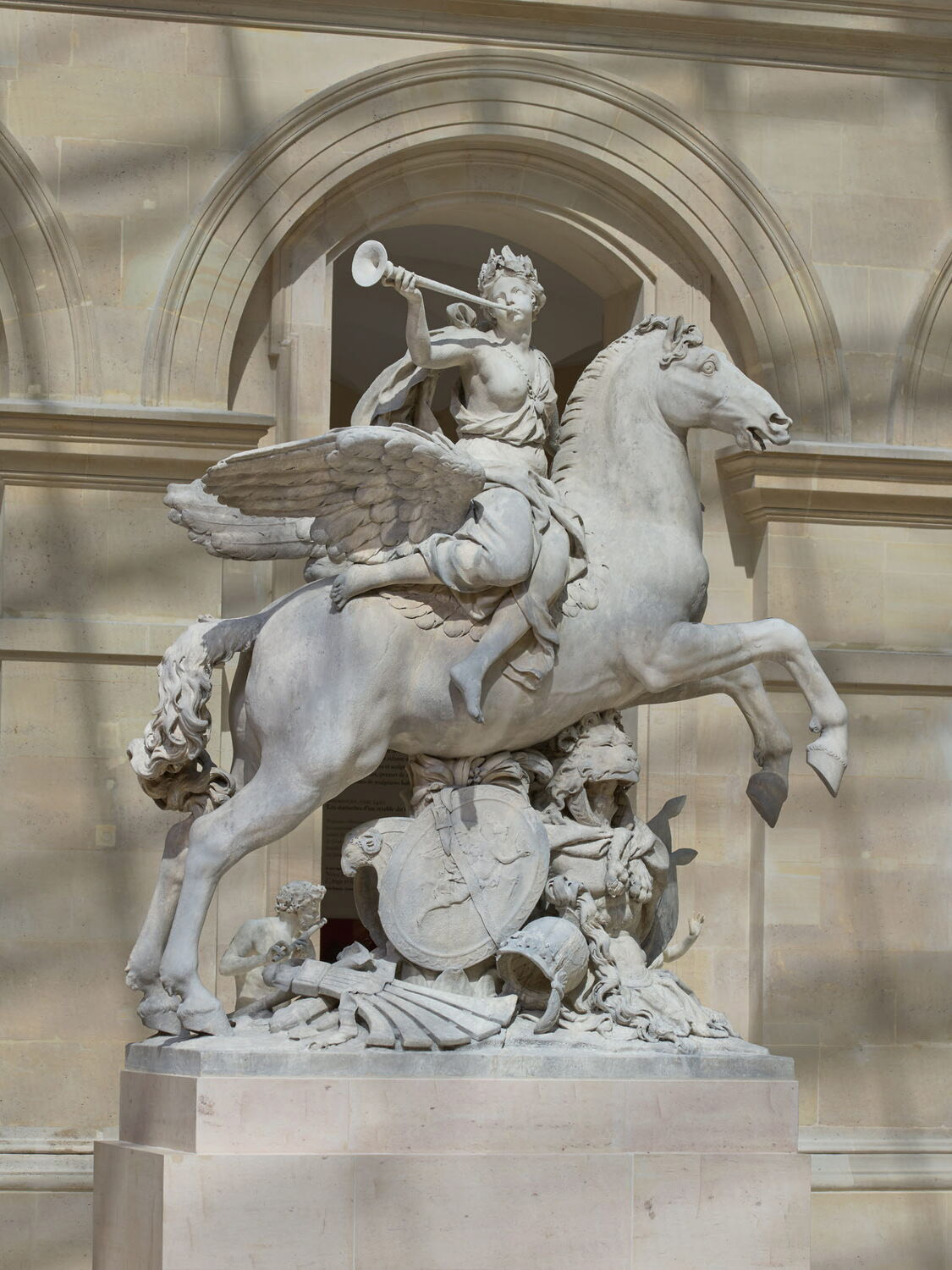
The Marly Horses – Take 2
Some 20 years later, Louis XV inherited Marly and he commissioned new works from Guillaume Coustou to replace those that had been removed. At the time, nature replaced mythology as the subject of predilection. The sculptor rivals his predecessor, infusing even more energy into his rearing horses.
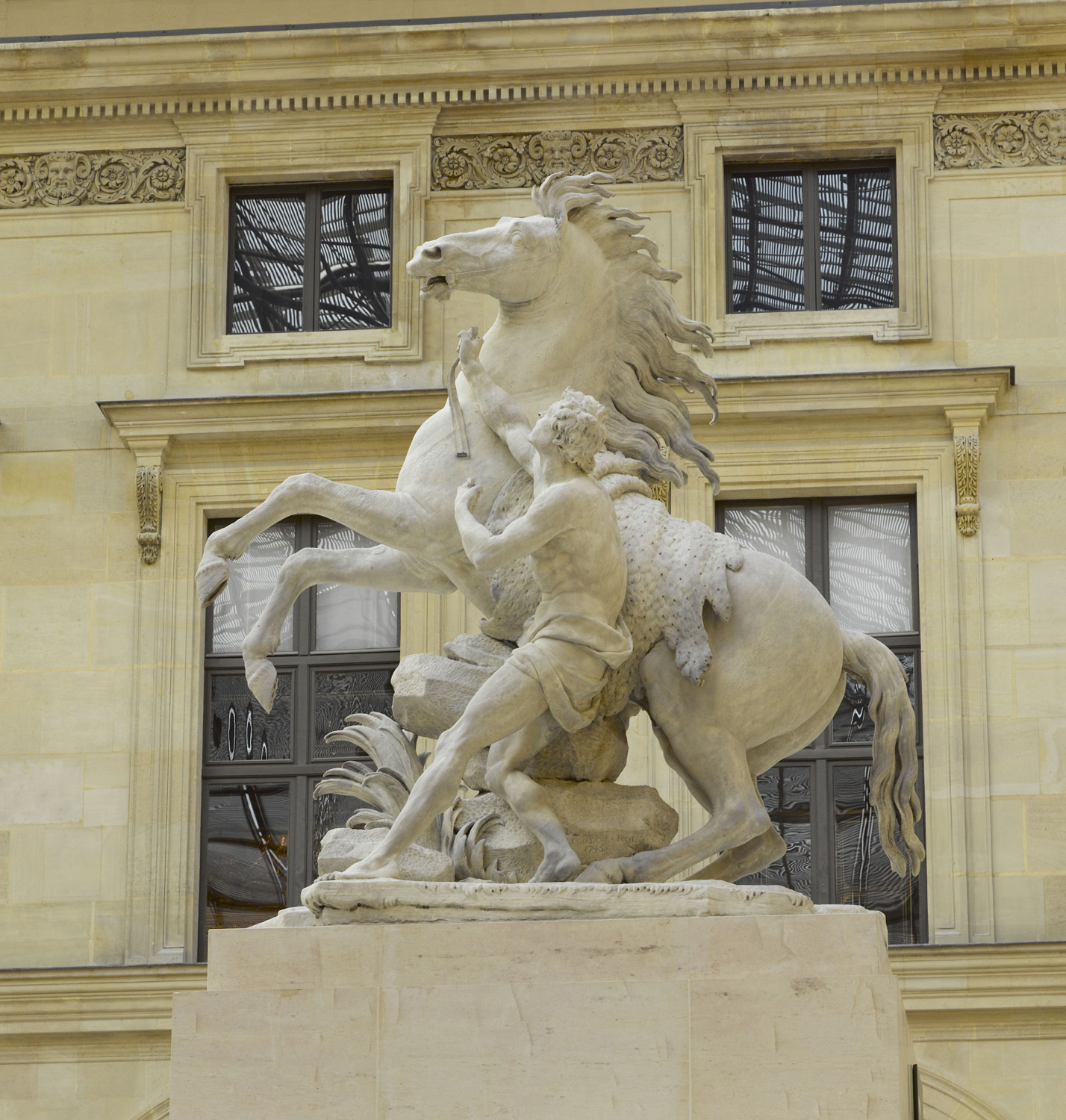
The masterpieces
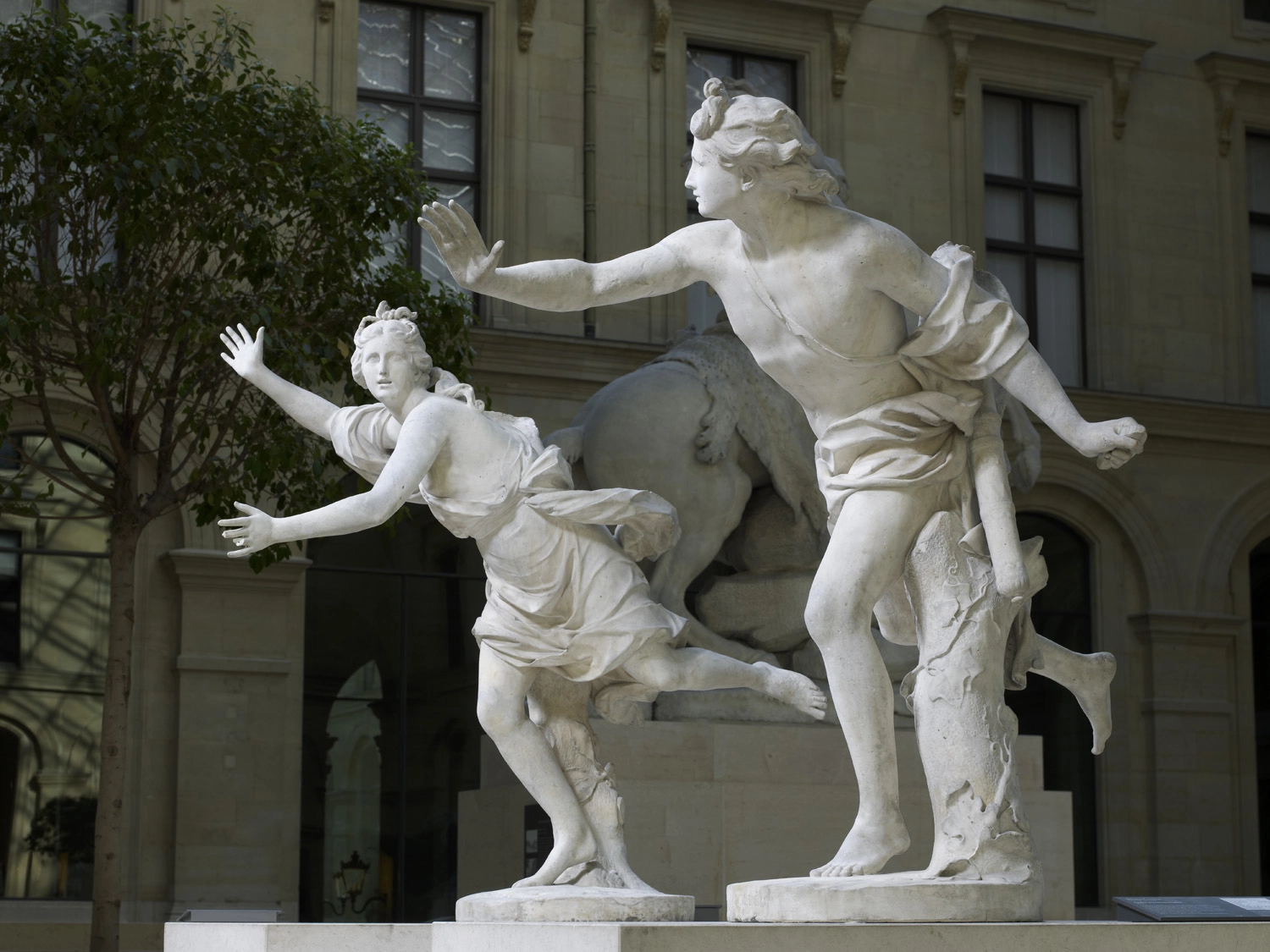
Nicolas Coustou, Daphne Chased by Apollo
1 sur 14
Did you know?
Pieces of a puzzle...in bronze
Reuniting statuary groups for the museum sometimes proved tricky. During the French Revolution, statues of kings placed in the centre of large squares were destroyed. But some works that decorated the pedestal of monuments made to the glory of the king were found after a long search in the 19th and 20th centuries. Like these bronzes that adorned the base of a statue of Louis XIV and the perimeter of Place des Victoires.

More to explore
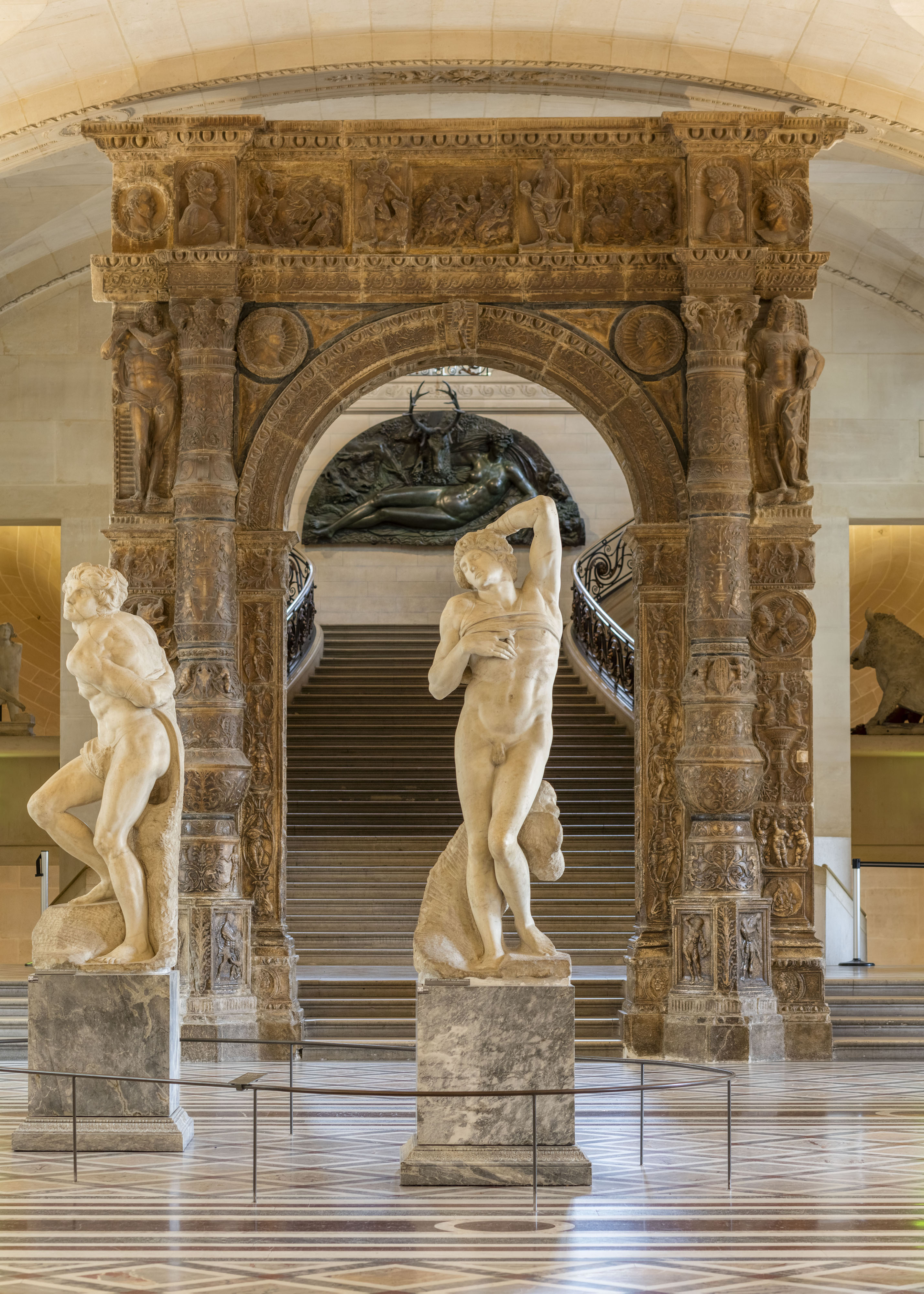
Three centuries of Italian sculpture
The Michelangelo Gallery
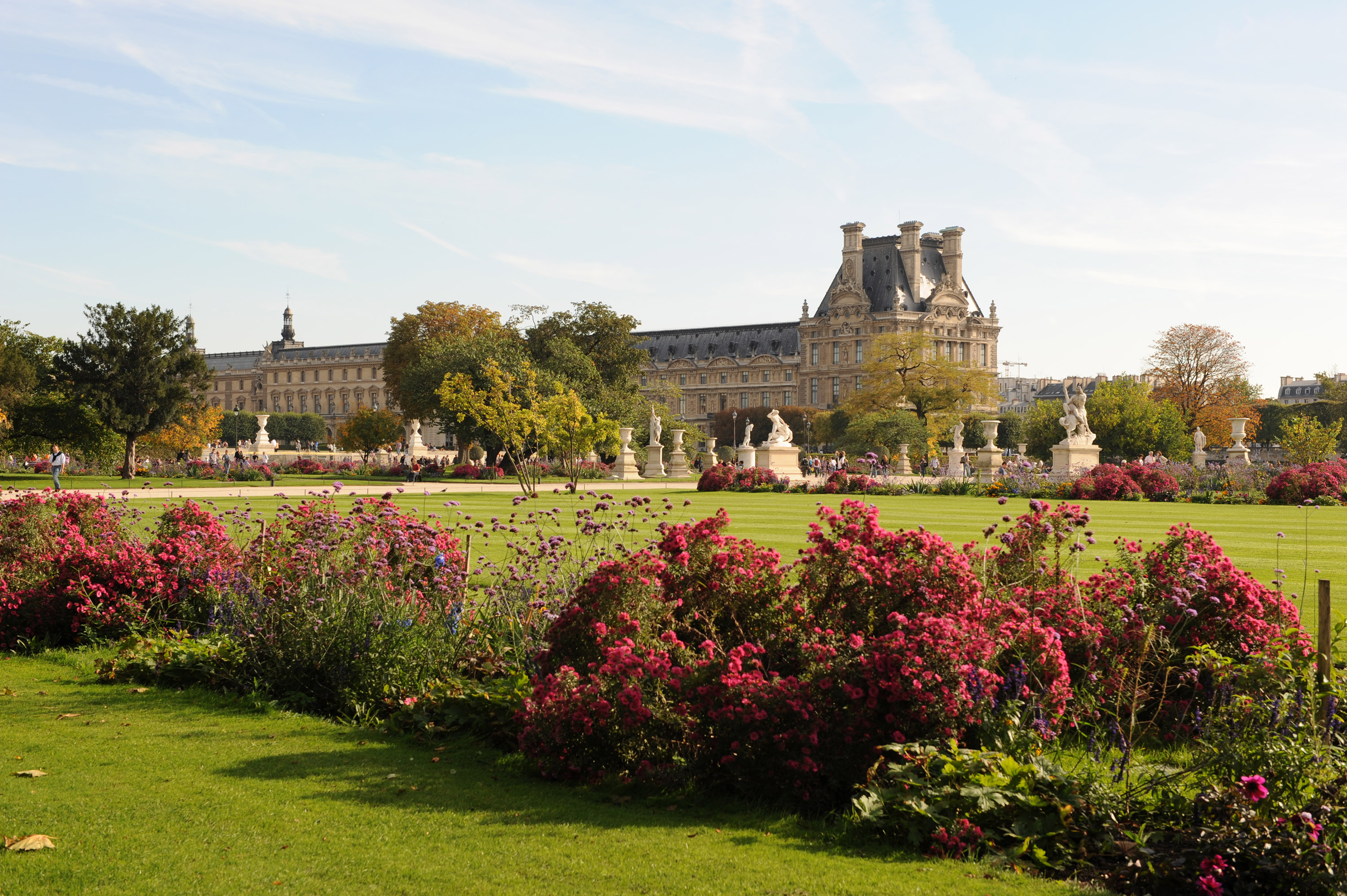
From Royal Garden to Public Park
The Tuileries Garden


